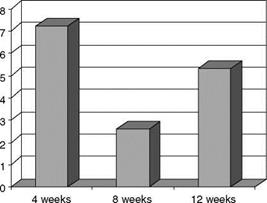There are several published studies discussing the anti-aging benefit of ascorbic acid. The reported doses of vitamin C tested are fairly high, and the base sizes are relatively small (n<23). Some of the studies address ingredient oxidative stability, a particular challenge with this form of vitamin C. In oil-in-water emulsion, loss of nearly half of the ascorbic acid in a month is typical (37). To achieve stability, these authors used oxygen impermeable aluminum tube packaging which reduced ascorbic acid loss to less than 10%. After one week of topical treatment of human skin, there was significant reduction of UVA-induced oxidation by 3% ascorbic (41% reduction), whereas the reduction by 3% sodium ascorbyl phosphate was smaller (16%) and not significant. In a double-blind, placebo-controlled, split-face 12-week study (37), stabilized 3% ascorbic acid applied topically (n = 23) was found to be well tolerated by the skin and reduced facial wrinkles as determined by skin replica analysis (Fig. 9).
|
Figure 9 Facial wrinkle reduction (skin replica analysis) by topical 3% ascorbic acid. |
In another double-blind, placebo-controlled, split-face 12-week study (38), 17% vitamin C (10% as ascorbic acid and 7% as tetrahexyldecyl ascorbate; n=10) in an anhydrous gel was applied topically. Based on dermatologist grading, there was reduced facial photoaging. From histological assessment of biopsy specimens, there was improvement in the collagen (increased Grenz zone). In a third study (39), topical 5% ascorbic acid (n = 20, 6 months) improved photodamaged forearm and upper chest skin based on dermatologist scores, skin surface replicas, and biopsy specimen analysis (improvements in elastin and collagen fiber appearance). And lastly, a three-month study (40) of a stabilized ascorbic acid formulation (specific concentration and pH not specified, but likely approximately 10% ascorbic acid at low pH) revealed improvement in facial skin based on dermatologist grading and facial image analysis. However, this formulation led to instances of aesthetic issues for test subjects (sting, erythema, dryness) which may have contributed to the very high drop-out rate in this study (started with n= 28, with n= 19 finishing the study).

